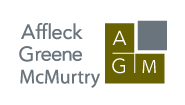Foundations of Effective Cross-Examination
Cross-examination is an invaluable tool at trial. The ultimate challenge for a trial lawyer is to extract information from the opponent’s witnesses to support their client’s case and/or undermine the credibility of the opponent’s position. While no substitute exists for experience I have tried to outline some practical guidelines to assist those who are developing their own style and techniques.
Be Yourself
I have been fortunate enough to work with and witness on the other side of cases the cross-examination techniques of many of the best lawyers in this jurisdiction. There are commonalties in the approach of all of them, which can be traced to the general rules discussed below. What is striking, however, is the stylistic range between these counsel. This can be attributed to the fact that all good cross-examiners adopt a tone and approach consistent with their own personality and manner of speaking. In contrast, it is readily apparent when someone is attempting to mimic a style unsuited to their personality. The jarring result will detract from the points otherwise being made by the cross-examiner.
Prepare, Prepare, Prepare
Preparation is the key, regardless of the amount of experience a lawyer has in cross-examining witnesses. There is no substitute for a clear analysis of the strengths and weaknesses of your own case, and of the opponent’s case, and a thorough knowledge of the evidence.
In civil cases, due to examinations for discovery, counsel know particularly what an opponent’s main witness will say. There will also be some indication of what other witnesses will testify to through pre-trial witness statements, responses to undertakings and documents.
Ideally preparation will allow the cross-examiner to know before standing up all of the information he or she wants to extract from the witness. When unexpected responses arise, careful and thorough preparation will also allow a cross-examiner to exploit the opening or deal with the unhappy surprise.
Threshold Issue: Should You Cross-Examine?
The threshold decision is whether to cross-examine a witness at all. Counsel must weigh the possible benefits against the possible risks. Is the witness important? Was the testimony credible? Will a cross-examination give the witness an opportunity to redeem a bad performance? Is there any real ammunition to use against the witness?
It is a difficult decision to pass up the opportunity to cross-examine. Yet there are occasions when the best decision a lawyer can make is to remain seated. Sometimes the most eloquent statement is silence, implying that nothing that the witness said was worth the time or effort of cross-examination.
Remember that there is no requirement to cross-examine a witness at trial. The one exception is that where counsel intends to subsequently contradict the testimony of a witness, the witness must be confronted in cross-examination[2].
What is the Goal?
There are two basic purposes to cross-examination. The first is to extract favourable evidence. This involves getting an opponent’s witness to agree to facts that support the cross-examiner’s theory of the case.
The second is the destructive cross-examination, which involves, as the name implies, damaging the credibility of the witness or the witness’ testimony.
These two purposes are not mutually exclusive. However, it is often a difficult line to walk to rely on admissions from a witness while at the same time impeaching that witness’ credibility. In such circumstances the best approach is generally to create a separation within the cross-examination, i.e. obtain the admissions in one distinct part and impeach credibility in another, the subtext being that the witness was reasonable when making the admissions, but then stopped testifying in a forthright manner.
How to Plan an Effective Cross-Examination
Although we have all heard it from the day we started practising, it is very useful to commence trial preparation by outlining the closing argument. This exercise sets the course for the whole trial and helps counsel stay focussed on what is important and to filter out all but the necessary and essential facts.
The closing provides the road map. With this map, counsel can determine what witnesses will provide what essential pieces of evidence. With respect to cross-examinations consideration can also be given to whether any additional helpful evidence can possibly be extracted from a witness without the risk serious damage to their case. The possibility and advisability of attacking the credibility of the witness to be cross-examined should also be assessed at this preliminary point.
Once a cross examiner has determined what essential facts they need from a witness, and what else they may be able to get without too much risk, the detailed planning can begin. Remember to keep it simple. Even the most complex case can be summarized into a relative few issues. Brevity is a virtue.
The “Rules” of Cross Examination
The term “rules” is somewhat misleading. Some of the most brilliant cross-examinations involve serious breaches of these rules. This generally occurs when a seasoned cross-examiner has taken the measure of a witness, gained control through impeachment or otherwise, and has been able to take the witness places that mere mortals, the rest of us could never get them to go.
In general, however, the following rules should be adhered to.
- Know the likely answer before asking the question – In general, play it safe; discovery is over, this is not the time for fishing.
- Ask only leading questions – questions that suggest the answer or can be answered only with a “yes” or “no” are almost always the only appropriate questions on cross-examination.
- Preclude the Opportunity for Explanation – questions that ask “how” or “why” invite disaster and should be avoided entirely.
- Use short, clear questions – lead up to big points with a series of short, precise questions. Complicated questions may only confuse the witness and the trier of fact.
- Do not repeat the examination in chief – the “tell it again” approach is ineffective and only serves to let the trier of fact hear the opposition’s theory of the case for a second time.
- Listen to the witness’ answers – it may appear obvious, but many counsel do not listen to the witness’ answer or observe their body language because the are already onto the next question. If a cross-examiner’s head is buried in their notes, any unexpected opportunities presented by the witness may be missed.
- Do not argue with the witness – arguing with the witness is legally improper, not to mention unprofessional and ineffective.
- Control the witness – there are several ways to control a witness, including asking precise leading questions, and repeating questions to which the witness’ answer is unresponsive.
- Don’t ask one question too many – remember that cross-examination is to establish facts to be referred to in closing argument. Save the obvious, ultimate question to be posed rhetorically in the closing argument when there is no witness to give the wrong answer.
- Finish Strong – reserve one of your strongest points for the end of the cross-examination as it is more likely to be remembered.
Impeachment
Impeachment is one of a trial lawyers best tools in cross-examining witnesses. While most of a cross-examination is made up of attempts to demonstrate inaccuracies or rebutting a witness’ testimony, impeachment allows counsel to discredit the witness as a reliable source of information. Impeachment involves demonstrating and emphasizing the differences between the witness’ testimony and a prior statement. Of course, its effect can be diluted when it is overused, or used ineffectively.
There are several sources of prior statements, however the most common is the transcript, either from a cross-examination or discovery in civil cases or from a preliminary hearing in criminal cases. A tried and true formula for successful impeachment is as follows:[3]
- Once again Prepare, Prepare, Prepare – Review the transcript and prepare an index of important subjects, listing page and question numbers. Include any additional references in the transcript where the witness amends, adds to or qualifies the answer. The passage should be clearly marked so that at trial counsel knows where to stop and start.
- Listen to the witness – during examination in chief counsel needs to listen carefully for any inconsistencies between the trial testimony and the transcript. Do not be concerned with minor differences. If there are significant differences between the prior statement and the witness’ testimony, consider whether to impeach. If the answer at trial is more helpful, let it be. If the answer at trial hurts the cross-examiner’s case, the contradiction should be raised.
- Recommit the witness to his or her current testimony – use the witness’ exact words wherever possible.
- Remind the witness of the prior statement – remind the witness of the location, date, and the testimony given under oath. Have the witness agree that a statement was given at that time. If the cross-examiner prefers the prior statement, it is necessary to get the witness to agree it is likely more correct given its proximity to the events.
- Get the judge on the same page – give a copy of a witness brief containing the transcript and answers to undertakings and refusals ordered answered to the witness and the judge and refer them to the excerpt to be read.
- Confront the witness – read the previous questions and answers from the transcript. Do not ask the witness to read the statements to the court – this surrenders control to the witness. Ensure that the witness admits that he or she gave the prior statement. If the witness fails to make this admission, there is no contradiction. Section 48 of the Ontario Evidence Act[4] provides an examination or deposition is presumed to represent accurately the evidence of the party or witness unless there is good reason to doubt its accuracy.
- Have witnesses admit the answers are true – Have the witness admit that the prior answers are true. If the witness will not, then the answers are not evidence and will only be relevant as to the witness’ credibility, i.e. that the prior sworn evidence was false.
- Do not ask the witness to explain the inconsistency – doing so will only weaken the impact.
- Impeach one inconsistency at a time – if there are several facts about which the witness has made inconsistent statements, impeach all the facts separately. Combining them all into one impeachment will lessen the impact of the impeachment.
Cross Examining the Expert Witness
The general rules set forth above apply to the cross-examination of an expert witness. In particular, the rules relating to avoiding at all costs giving the witness the opportunity to provide an explanation and avoiding argument, are especially applicable. It is a rare occasion that a lawyer will win an argument with an expert on his or her own turf.
Preparing for an Expert
In terms of additional preparation, counsel needs to have a thorough review of the expert’s report. In addition, read the expert literature in the subject area written by both the proposed expert and others in the field. The Internet is a great tool for discovering information, papers, articles, speeches or even other testimony of an expert. Most importantly consult your own expert about the opponent expert’s possible weaknesses in respect of their qualifications, opinions and reasoning.
Cross Examination on Qualifications
It is open to counsel to choose to cross-examine a proposed expert on his or her qualifications, but it is not a right that needs to be exercised. Canadian courts rely on the elements of relevance and helpfulness to determine whether the expert evidence should be received[5]. Even if an expert will not be prevented from being qualified, it may be worthwhile to cross-examine the expert on qualifications at the outset in order to firmly establish the limits to the expert’s knowledge, expertise and usefulness.
How to Cross Examine an Expert
An opponent’s expert may provide favourable testimony relating to the qualification’s of the cross-examiner’s expert, confirming areas of agreement between the experts involved in the case or testifying about areas of agreement in the experts’ field.
Once all the favourable testimony has been elicited, move to the attack. The most effective way attack an expert witness’ opinion is by varying or adding to the facts underlying the expert’s opinion. This involves asking the expert if his or her opinion would be different if the facts assumed were varied in a certain manner. If the witness admits that the opinion would change, showing that facts not considered by the expert are true may significantly reduce the impact of the expert’s opinion. If the witness’ opinion never varies whatever the facts may be, the witness will lose credibility in the eyes of the trier of fact.
Similarly, counsel can attack the assumptions the expert used to formulate their opinion. It is effective to ask the expert witness to alter an assumption by substituting one the cross examiner believes in more consistent with the evidence. Again, if the expert agrees it can reduce the impact of the expert’s opinion.
Finally, an expert’s opinion often depends upon facts to be established by other witnesses. Accordingly, successfully challenging the factual basis of the expert’s opinion during the cross-examination of other witnesses will undermine the expert’s testimony. In this situation, a cross-examiner need only have expert to admit that those facts are important to the opinion rendered.
Conclusion
Cross-examination should not be feared. While it takes a great deal of experience and innate ability to become a brilliant cross-examiner, a lawyer can become an effective one quite quickly by adhering to these general rules.
There is a lot of drudgery in civil litigation. The preparation and execution of an effective cross-examination makes the drudgery worthwhile.
Published September 2006
[1] Originally presented by Jim Orr as part of the Advocates’ Society continuing legal education seminar, "A Trial from A to Z", May 26, 2006.
[2] Browne v. Dunn (1893), 6 R. 67 (H.L.)
[3] The steps set out below are based on information compiled from the following sources: The Honourable Mr. Justice Dan Ferguson, “How to Cross-Examine on a Transcript” (1999) 18th Advocates Society Journal 19; S. Lubet, Modern Trial Advocacy Analysis and Practice, Canadian Edition (NITA, 1995) at 111-140; and Thomas Mauet, Fundamentals of Trial Techniques, Canadian Edition (Toronto: Little, Brown & Company, 1984) at 229-241
[4] R.S.O. 1990, c. E.23
[5] R. v. Mohan, [1994], 2 S.C.R. 9
article keywords: trial, trial practice, impeachment, witnesses, cross-examine, cross-examination, expert, credibility, questioning, evidence, leading, testimony, testify, advocacy, arbitration












